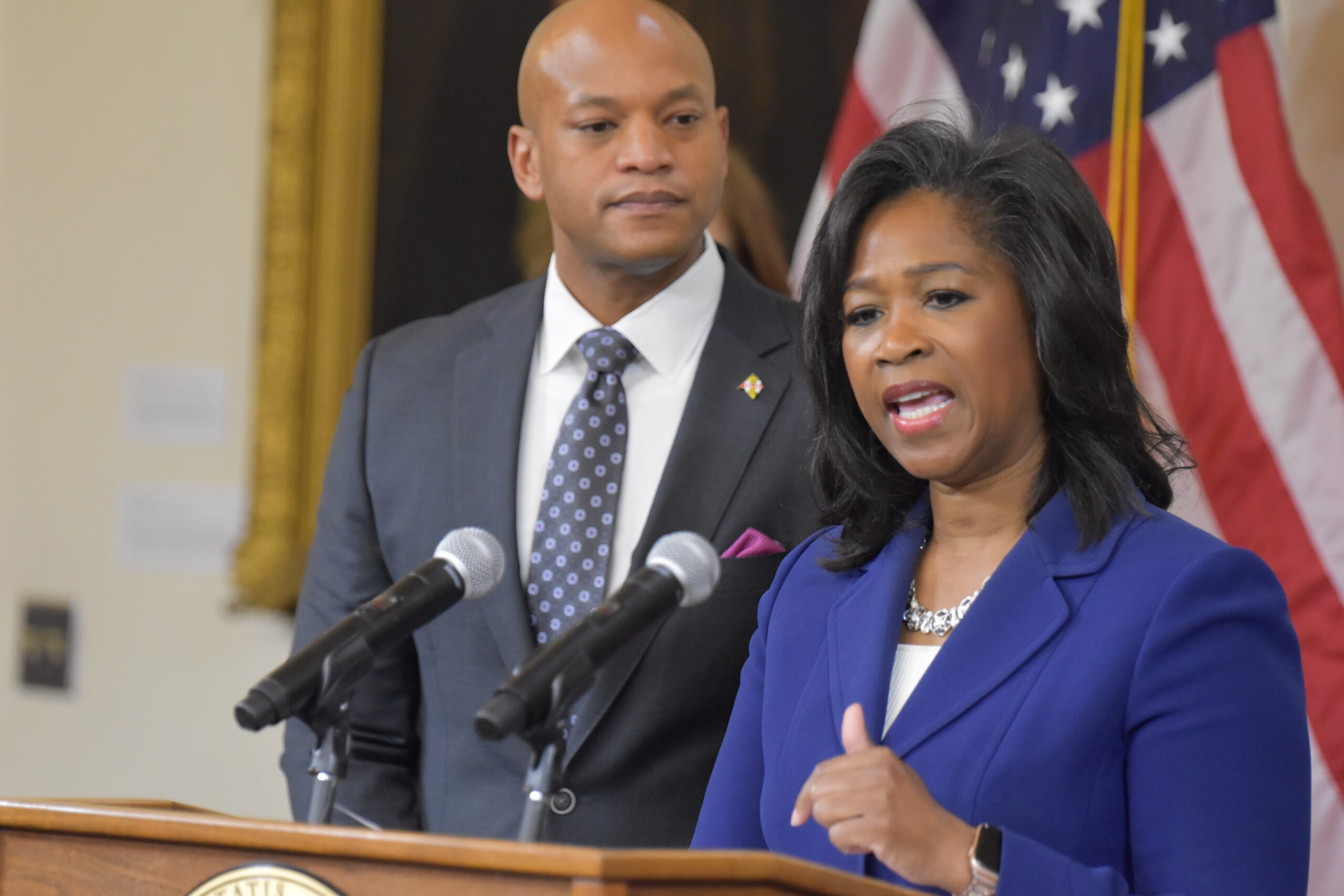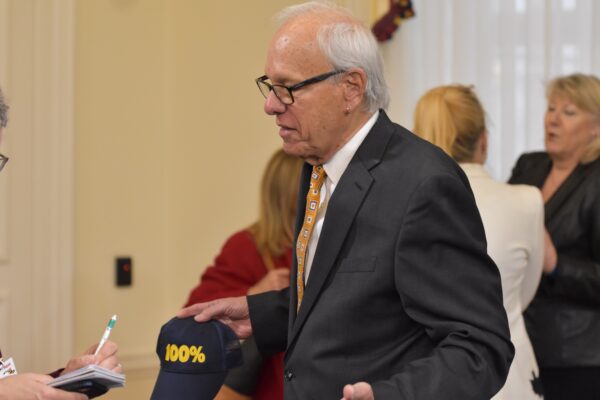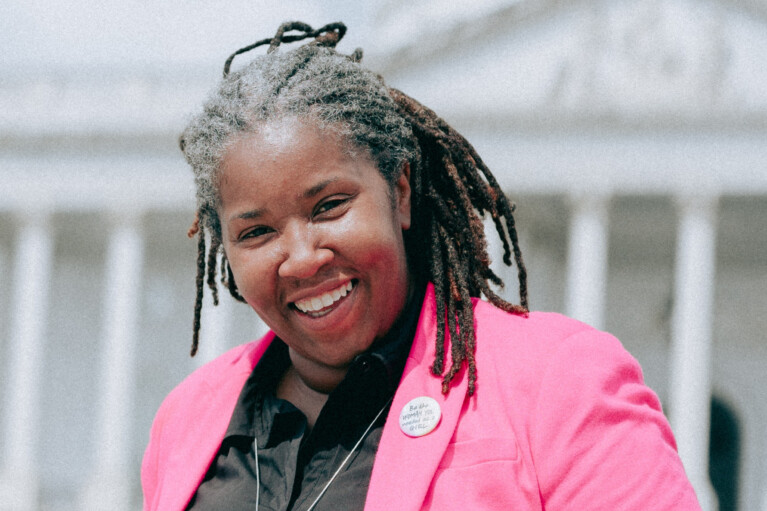Moore puts extra pot of cash toward green projects

By Kiersten Hacker
Gov. Wes Moore (D) announced plans Friday for spending $90 million on reducing carbon pollution in Maryland, using an unexpected pot of money to fight what he called “environmental injustice.”
The largest portion of the money, $50 million, will go toward decarbonizing community buildings like hospitals, multifamily housing and schools, under the plan Moore outlined. The state will devote $23 million to electric-vehicle charging stations in low- and middle-income neighborhoods and $17 million to building up a fleet of electric school buses for public schools.
Moore and several other state officials characterized the $90 million investment as “a downpayment” toward fulfilling the state’s ambitious climate goals — an undertaking that could cost about $10 billion in the next decade, according to estimates in a report issued by the Maryland Department of the Environment at the end of last year.
Moore emphasized the need for partnership among advocates, lawmakers and his administration, unveiling the new details along with representatives of each, crowded elbow-to-elbow in the Governor’s Reception Room at the State House.
“We’re joined today by members of every single segment of our society, who are all saying with a collective voice that the climate crisis is one of the biggest challenges that we share,” Moore said. The fight to make Maryland the “cleanest and greenest” doesn’t just take words, the governor said, “it takes work.”
The work takes funding, too, and like other issues being discussed this legislative session, future funding solutions are uncertain. Eventually, the administration’s Climate Pollution Reduction Plan will cost the public sector about $1 billion per year, according to the state’s own projections.
At the same time, state officials are obligated by the 2022 Climate Solutions Now Act to decrease greenhouse gas emissions — and in fact to reach net-zero emissions by 2045. This year, the state had an extra accumulation of money in one of its funds, according to state officials, and Moore decided to use it to advance those goals.
The money will come from Maryland’s Strategic Energy Investment Fund, which is replenished with revenue from quarterly pollution credit auctions that the state collects through the Regional Greenhouse Gas Initiative. That fund is generally used to provide clean energy grants throughout the state.
Paul Pinsky, director of the Maryland Energy Administration, which administers the fund, told Maryland Matters that the $90 million had been held as a cushion to guard against lower than expected proceeds from the carbon credit sales and the costs of administering the energy investment fund. But by allocating the money now, the Moore administration is “pushing the urgency” of beginning to provide funding to attain the state’s climate goals.
The $90 million allocation will have to be approved by the General Assembly during this year’s budget deliberations, Pinsky said — and it’s unlikely that the strategic investment fund will have anywhere near that level of money in the years ahead, he added.

Maryland Energy Administration Director Paul Pinsky, holding a baseball cap that says “100%,” signifying the state’s goal of using 100% clean energy by 2035. Photo by Bryan P. Sears.
State officials still face difficult fiscal choices in the next few years, with spending projected to outpace revenues by growing margins. Environment Secretary Serena McIlwain acknowledged that creative new funding solutions will be necessary to continue implementing the agency’s plan in the years to come.
Currently, McIlwain said, the agency is still looking for solutions and will work in partnership to find them.
“We don’t have time to play around and waste time,” she said. “We have to do what we need to do to move forward.”
Long-term plans to address climate change and make Maryland a leader in climate action will be fiscally responsible, the governor said.
“If you look at how we have managed this entire budget, we have shown that being fiscally disciplined and being fiscally responsible and also being bold, don’t have to be mutually exclusive ideas, mutually exclusive thoughts,” Moore said.
The governor suggested that future funds for the climate plan would come from the federal government and could be supplemented by philanthropic spending.
Moore’s new proposal requires that a minimum of 50% of the investments go to “historically undervalued, historically under-seen and historically underestimated” communities. The installation of electric-vehicle charging stations will start in low- and moderate-income communities, the governor said.
Those who often come last, Moore said, should come first.
“Climate justice is economic justice,” he said.
Pinsky concurred: “Just as many of the problems that cause climate change are disproportionately affecting the underserved and overburdened, those very same people need to be part of the solution,” he said.
Children must be a part of the solution, too, leaders said. Kim Coble, executive director of the Maryland League of Conservation Voters, stressed the need to take action for the future of children and their health. Kids have been part of the environmentalists’ push to put more electric buses on the road, and were called out at the news conference Friday for their role.
Coble said she is a new grandmother, and she teared up at the podium as she pointed out her son in the audience and the children who were present.
“If we don’t take action for them,” Coble said. “What’s the point?”
Josh Kurtz of Maryland Matters contributed to this report.




 Creative Commons Attribution
Creative Commons Attribution